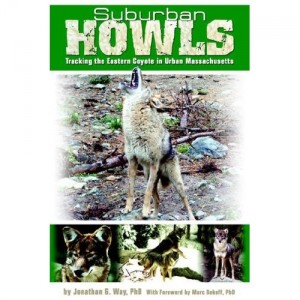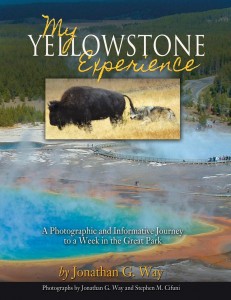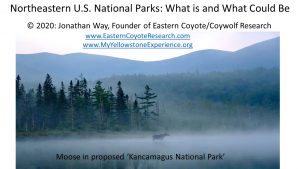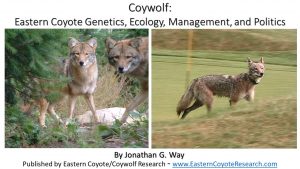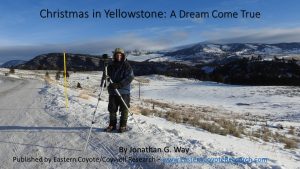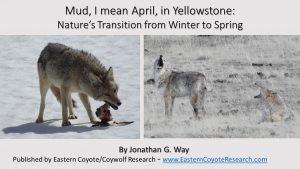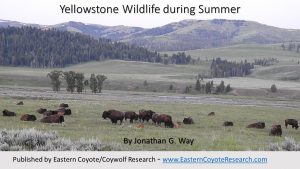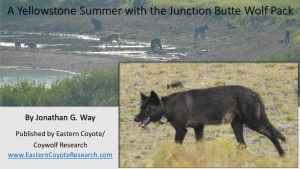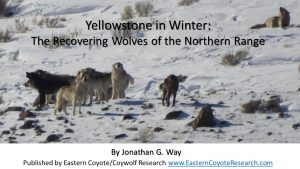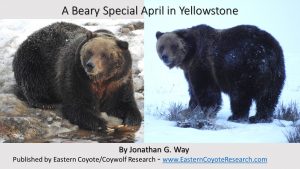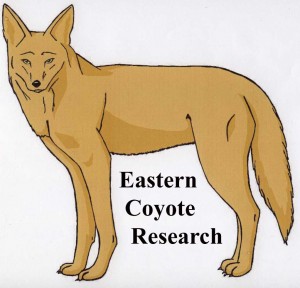Original description of the act: This act is a major event. I believe that Louise and I crafted the world’s first Carnivore Conservation Act. While this is intended for MA, we hope that it is eventually made into a national act, similar to how Raptors and Eagles are protected by special legislation. We are in the early stages and need help with legislators and other people to get the ball rolling on this.
Note: The CC Act was revised June 2014 to include a “Carnivore Conservation Stamp” for non-hunters and wildlife watchers to be able to purchase (section 3.d) and it defines where the funds for 3.d (carnivore stamp) and 3.c (Carnivore Hunting Tag) are dedicated. Secondly, we add an important term in section 3.f called “harvest threshold” that is aimed at preserving the natural social organization and population stability of each carnivore species. Lastly, we revised 3.i to make the act more palatable and fair for farmers. We really like the additions to this version as it allows non-hunters to put their money where their mouths are to help support carnivore conservation and assist livestock and pet owners with preventing depredations.
Update: December 31, 2014: We are still seeking legislative support for this initiative but various groups recently wrote to Cape Cod National Seashore to ban predator/carnivore hunting on the 45,000 acre refuge which amazingly still allows it. So there is some movement on aspects of this act. Also, since the posting of this page we have learned that the European Union established carnivore protections in Europe in the 1990s with remarkable success even in an area that has many more people (popular article here and here; scientific article here). Thus, it would be more apt to call this “North America’s first Carnivore Conservation Act” as we are way behind European counties in carnivore conservation despite the vaunted “North American Model of Wildlife Conservation” being taunted as the world’s most effective wildlife management system; I think most carnivores would disagree. I keep the original title and link above to not destroy this link that people may have already used to navigate to this site.
Kane, L., and J.G. Way. 2014. Carnivore Conservation Act of Massachusetts. Revised version June 2014 (original version July 2013). 21 pages.URL: http://www.EasternCoyoteResearch.com/downloads/MACarnivoreConservationActJune2014.pdf.

About Jonathan Way
Jonathan (Jon) Way has a B.S. (UMass Amherst), M.S. (UConn Storrs), and doctorate (Boston College) related to the study of eastern coyotes/coywolves. He is the author of the following books: 1) Suburban Howls, an account of his experiences studying eastern coyotes in Massachusetts; 2) My Yellowstone Experience, which details - in full color - the spectacular wildlife, scenery, and hydrothermal features that can be found in the world's first national park; 3) Northeastern U.S. National Parks: What Is and What Could Be makes the case to expand the National Park System in the Northeast by adding 3 new national parks that are 44,000 acres or bigger; 4) The Trip of a Lifetime: A Pictorial Diary of My Journey Out West consists of 560 pages and nearly 1,000 pictures of a 3.5 week trip out west in 2019, showcasing most of the large mammals found in North America; 5) Coywolf: Eastern Coyote Genetics, Ecology, Management, and Politics is a 280 page pictorial treatise of his over 20 years studying this creature; 6) Christmas in Yellowstone is a 200+ page, 259 picture book based on his 9 day trip to the park during the 2020 holiday season; 7) Mud, I mean April, in Yellowstone, which is a 330 page, 430 picture look at the park during the mud season when nature transitions from winter to spring; 8) Yellowstone Wildlife during Summer, which was a major project showing over 650 pictures of the park's amazing wildlife in over a decade of summers spent in the park; 9) A Yellowstone Summer with the Junction Butte Wolf Pack, which details, in 510 pictures, the life and times of a famous wolf pack followed during the summer by adoring fans; 10) Yellowstone in Winter: The Recovering Wolves of the Northern Range, which details, in over 450 pictures, the wildlife of Yellowstone, particular wolves and their prey, during the depths of winter; 11) Backpacking the Iconic Pemigewasset Wilderness, which describes my 3 day, 35 mile journey into the heart of the White Mountains, New Hampshire; and 12) A Beary Special April in Yellowstone, which details his week and a half long encounter with a wild grizzly bear. Jon founded and runs his organization, Eastern Coyote/Coywolf Research, where his goal is to conduct long-term ecological and behavioral research on eastern coyotes. He also supplements his research with regular trips to Yellowstone National Park and other national parks.
